I tested the Emma Cloud Duvet and found it lightweight and toasty – but these are the budget-friendly options I'd recommend instead
My Emma Cloud Duvet review puts the brand's microfibre duvet through its paces. Is it worth the money?
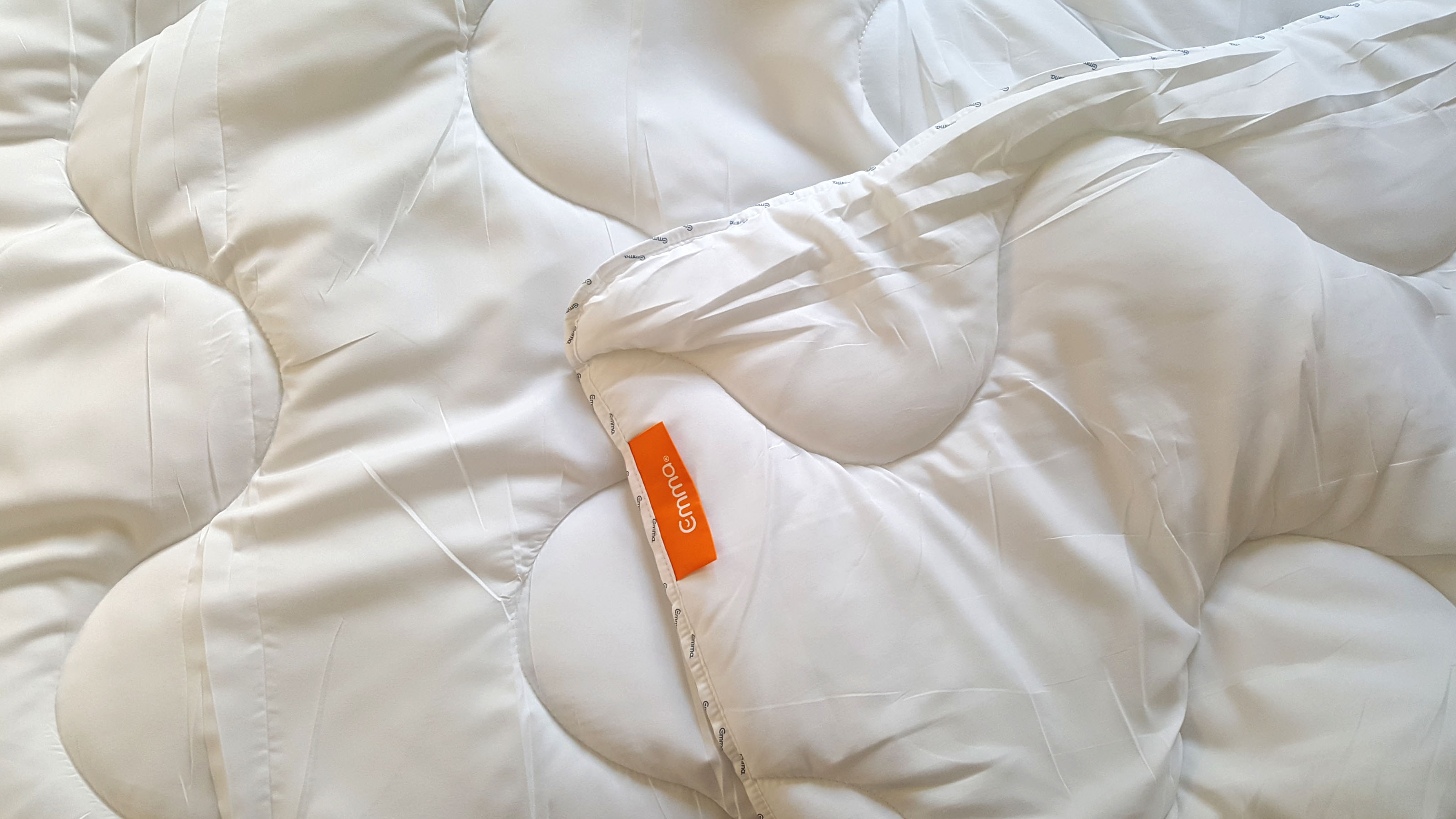
The Emma Cloud Duvet is a polyester microfibre duvet that's light, warm, and machine-washable. However, I found it a bit clammy to sleep under and feel it's expensive for what it is.
-
+
Very light
-
+
Good for cold sleepers
-
+
Machine-washable
-
-
Thin
-
-
A bit clammy to sleep under
-
-
Tog rating not specified
-
-
Expensive for what it is
Why you can trust Ideal Home

For this review, I put the Emma Cloud Duvet to the test on my own bed to see how it fared compared to the best duvets on the market.
In a nutshell
The Emma Cloud Duvet is a microfibre duvet with a polyester cover filled with polyester fibres.
During testing, I found it to be a super lightweight (it really does feel as light as a cloud), easy to care for thanks to the fact it can be machine-washed, and, potentially, a good option for cold sleepers as I got toasty super quickly under the covers.
However, I did find I needed to stick one leg out from under it to cool down only five minutes into bedtime. So if you're a hot sleeper the Cloud Duvet's lack of breathability could mean you're likely to overheat.
The lack of clarity on its tog rating also makes it a bit of a confusing purchase.
All in all, I thought this was an OK duvet, particularly if you're looking for a washable and lightweight option. However, there was nothing about the Emma Cloud Duvet that made me feel like it was a premium product.
The fact Emma hasn't chosen to use recycled polyester is disappointing and there are far more affordable synthetic duvets out there that do the same thing. You can find these in my full verdict below.
Sign up to our newsletter for style inspiration, real homes, project and garden advice and shopping know-how
Specifications
- RRP: £69 / £89 / £99 / £109
- Sizes: single (140 x 200cm) / double (200 x 200cm) / king (225 x 220cm) / super king (240 x 220cm)
- Materials: 100% polyester cover and 100% polyester fill
- Care: machine wash at 60°C (or maybe 40°C?!) and low tumble dry
- Manufacturer sleep trial: 14-night
Feel
We all know that first impressions count, and when the Emma Cloud Duvet arrived on my doorstep, I can't say I was that impressed.
As of writing, the double sized Cloud Duvet costs £89 – a not inconsiderable sum of money – and call me fussy, but the package that I received for that investment left me very underwhelmed.
Tightly rolled up in plastic packaging with a very average looking label on the front (that also confusingly referred to duvet as a 'Microfiber Duvet' rather than the 'Cloud Duvet'), this bedding didn't exactly scream premium product to me.
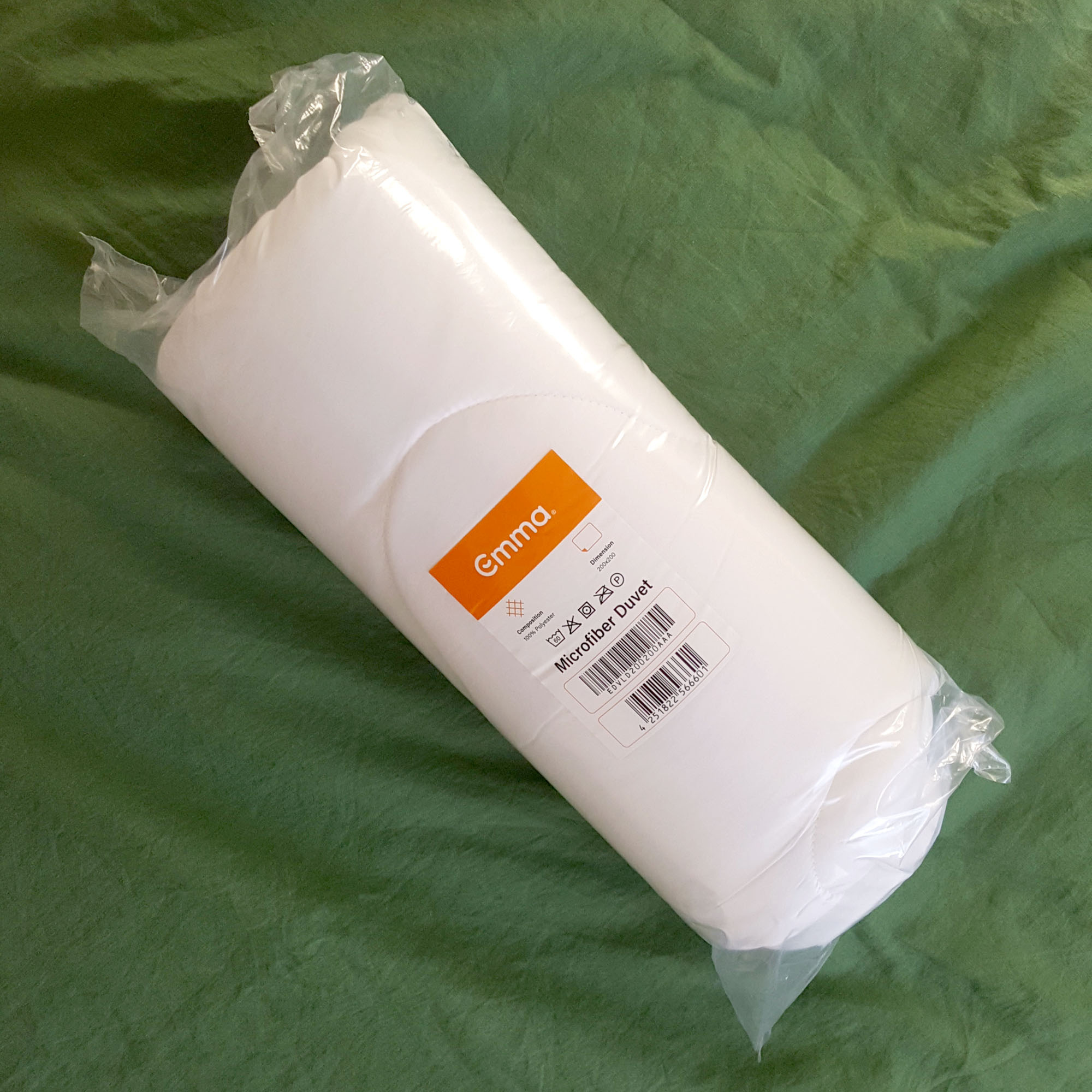
However, if I've learned anything during my four years of testing bedding it's that appearances can be deceptive. And, that big things can come in small, vacuum-packed packages (I'm looking at you mattresses-in-a-box). So, I put my initial judgments to one side and cut open the polythene.
At which point I got my next big shock. Because the Emma Cloud Duvet is thin. Really thin. When I picked it up and held it between my thumb and fingers it was only 2cm deep at maximum.
It was at this point I realised I didn't actually know what tog rating the Cloud Duvet was – because the duvet is only available in one warmth option I had just assumed it would have a mid-range tog rating of around 10.5 togs that would be suitable for most of the seasons – but this felt much thinner, more like a high summer 3 or 4.5 tog duvet.
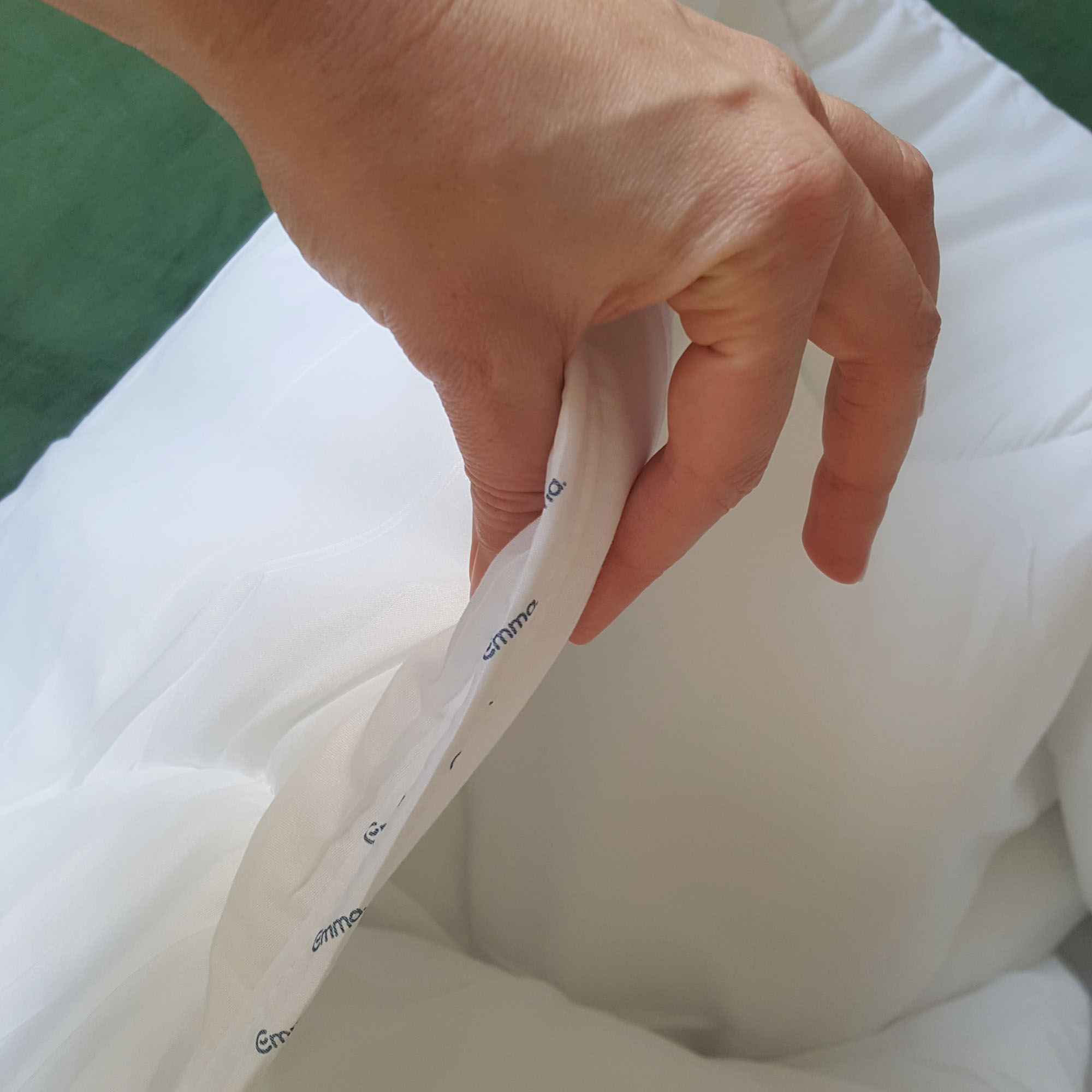
I headed over to the Emma website to check but came up empty-handed. Apparently, Emma doesn't think its customers need to know what warmth of duvet they're buying, which is a very confusing approach as I'd say it's the MOST important piece of information you need to avoid any duvet buying mistakes.
I checked the packaging and the care label on the duvet itself, but there was still no information on a tog rating. I would have asked the customer service chatbot on the Emma website, but it was out of action when I tried.
Well, I'd just have to sleep under it and see what happened – more on that in the next section. In the meantime, I considered the duvet's feel and how it draped on the bed.
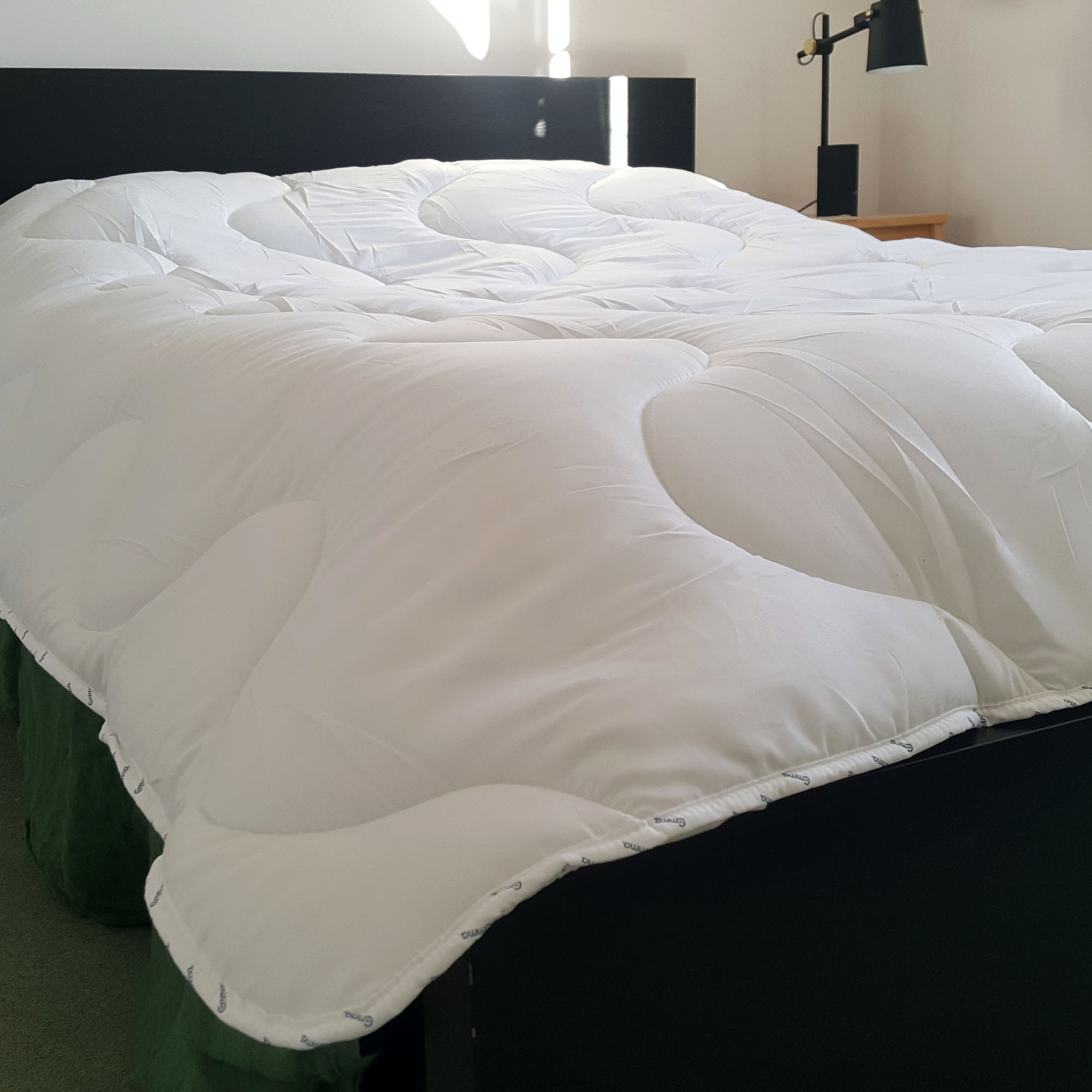
This is a synthetic microfibre polyester-filled duvet with a polyester cover, both of which are generally considered to be budget-friendly materials, and this feels like a budget duvet.
A microfibre fill is always a little nicer than a hollowfibre filling as it tends to mean the polyester fibres are brushed more thinly for a light and airy feel, and the Emma Cloud Duvet does feel light and relatively airy.
It was also silent to snuggle into (no noisy crunching or crinkling here) and it tucked in nicely around my body to eliminate any draughts – something I was grateful for, because judging by the duvet's thickness I thought I was soon going to be in for a cold night's sleep! And, it draped adequately enough on the bed.
All in all, I thought the duvet felt OK. But, just OK. Other than the Emma-branded piping along its edges, I couldn't yet see anything that distinguished this duvet from other microfibre duvets half its price.
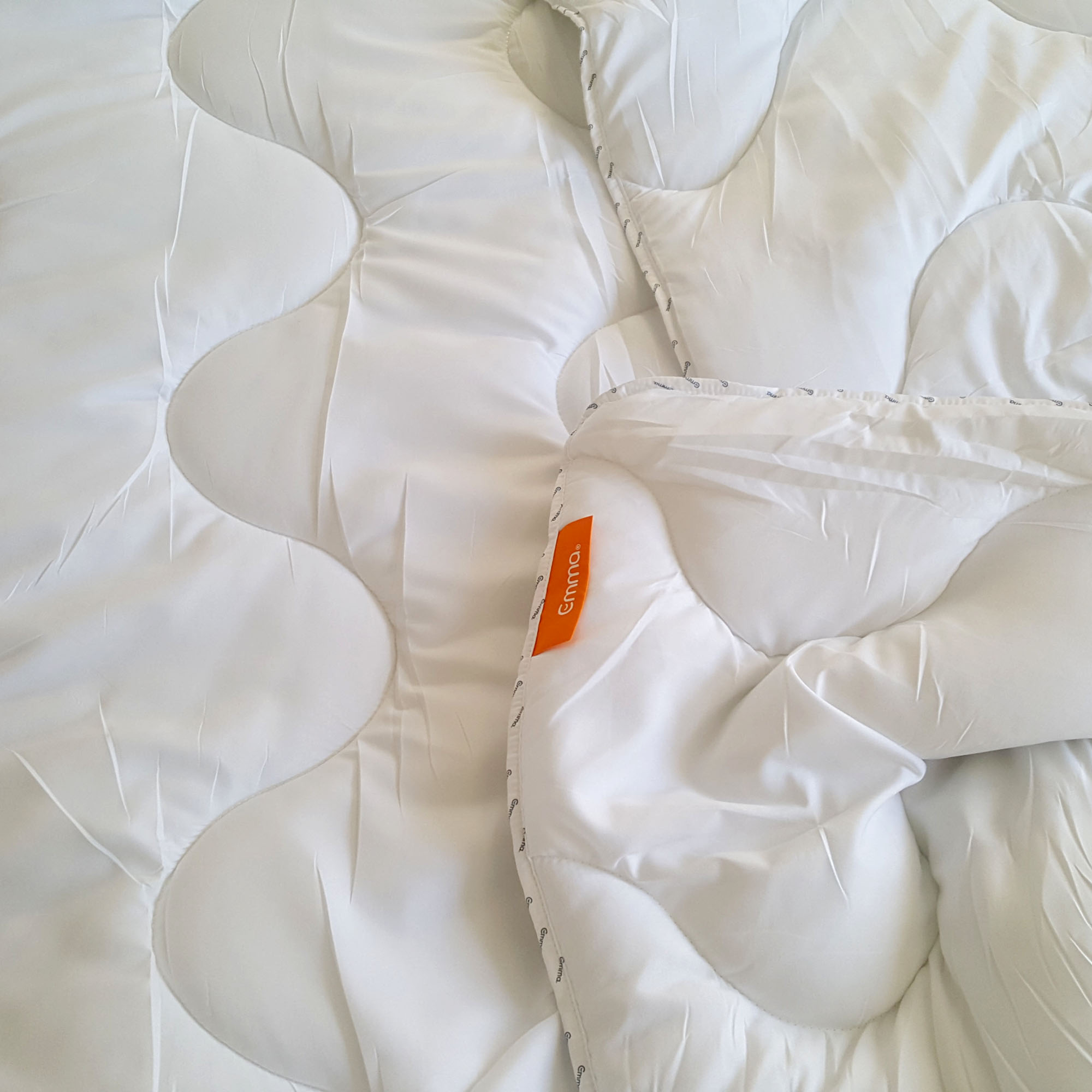
Temperature regulation
At 10pm I hit the sack and climbed under my new Emma Cloud Duvet to test out its performance.
I keep my bedroom between 16°c and 18°c for duvet testing (the ideal bedroom temperature to help us sleep better according to sleep scientists), and because of the duvet's thinness, I was concerned I was going to be cold.
However, after two minutes under the Emma Cloud Duvet, I was toasty. Five minutes in I had to stick a leg out from under the covers to cool down and regulate my body temperature.
Which I suppose isn't surprising. Temperature regulation is a common area where synthetic duvet filling can fall down. The polyester microfibres (in this case also paired with a polyester cover) aren't breathable and so reflect body heat back towards the sleeper rather than letting that heat dissipate through the duvet.
This can be a bonus if you're a cold sleeper as it means a warmer sleep. But, if you're a hot sleeper, like me, it means more likelihood of overheating.
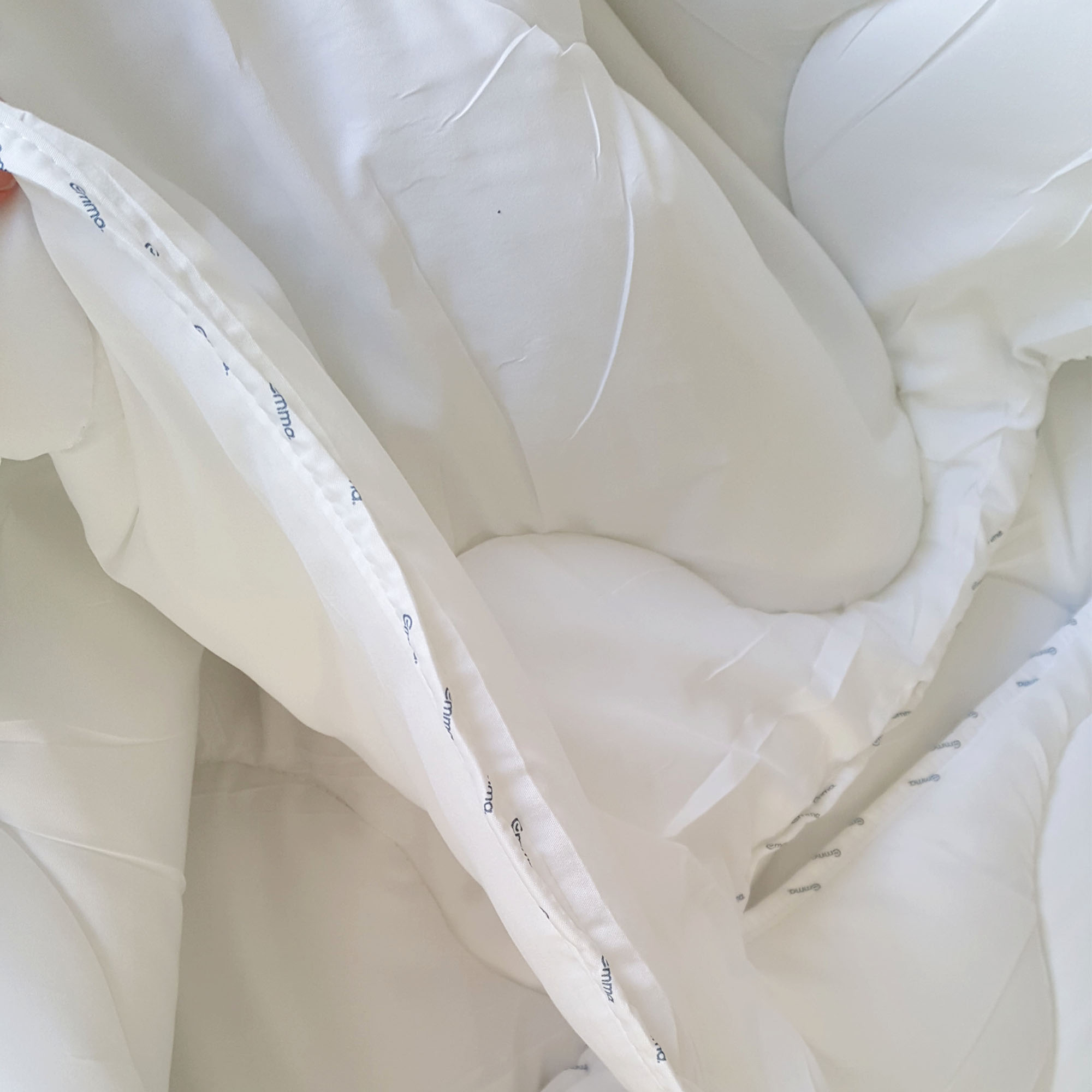
I soon realised I wouldn't have wanted this duvet to be any thicker than it is or I would have been sweating. As it was, I had an OK sleep under the Emma Cloud Duvet. I was warm throughout the night and didn't wake up too hot or too cold. I did feel ever so slightly clammier than I would have liked – this hot sleeper still definitely prefers a wool duvet such as the luxury Floks Luxury British Wool Duvet, the washable Woolroom Deluxe Washable Wool Duvet, or the more affordable Slumberdown Wonderful Wool Duvet for the excellent breathability they offer – but I didn't overheat during testing.
However, I wouldn't want to sleep under this duvet in any warmer ambient temperatures. The 16°c to 18°c testing conditions were just about right for me, but had I been testing this duvet in summer when my loft bedroom gets a lot warmer, I think I would have been waking up in a hot and sweaty mess on a regular basis.
However, the main plus point I found whilst sleeping under this duvet was how light it was for its warmth level. I'd previously been sleeping under much heavier wool duvets and it was refreshing to have something so light to lift in comparison – in that respect, the Emma Cloud Duvet does feel as light as a cloud.
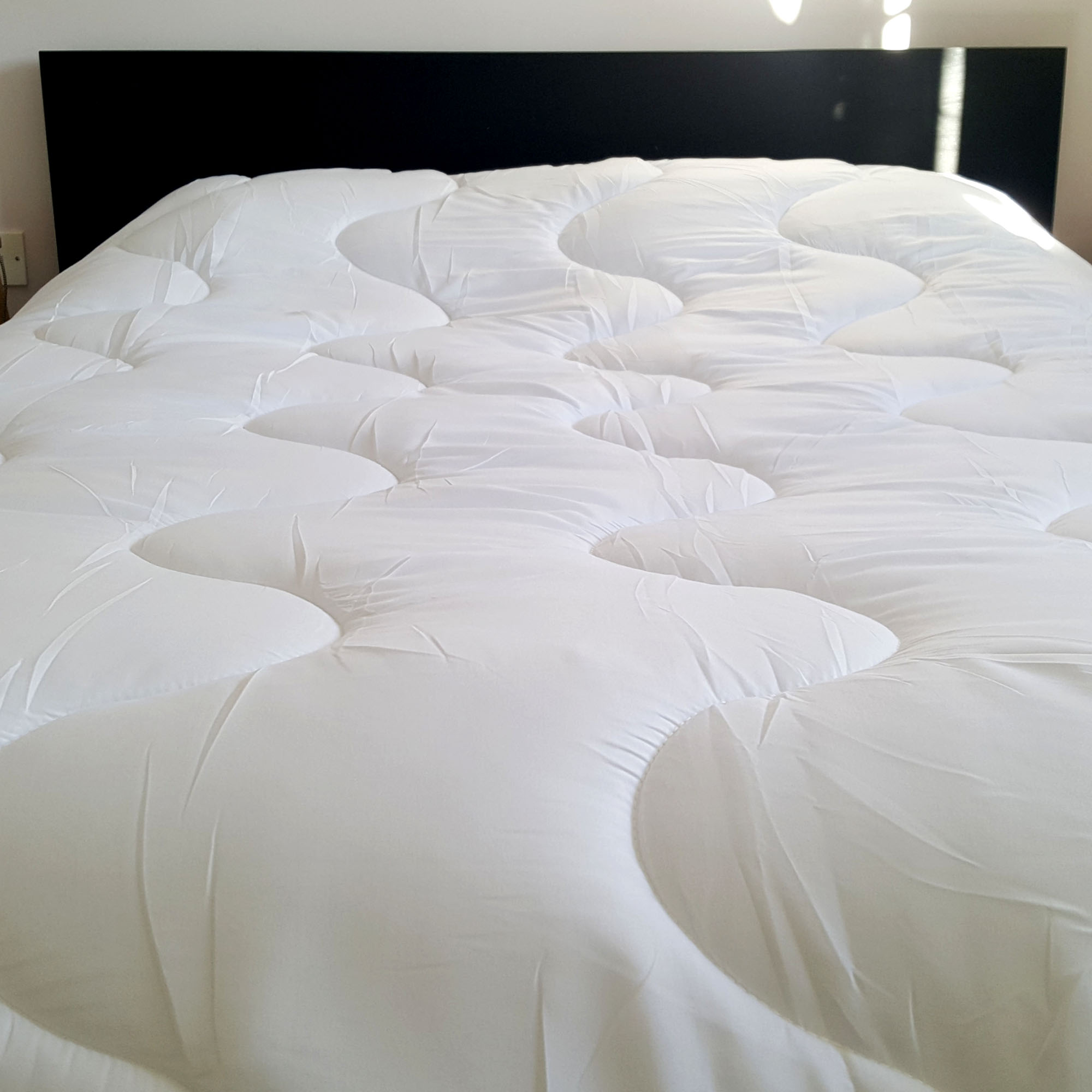
Ease of care
One of the main benefits of a synthetic duvet is that polyester is very easy to care for. You can usually stick a synthetic duvet like this one in the washing machine and wash it at a high temperature, so a synthetic duvet can be a good choice for anyone worried about bed-wetting or allergies.
The Emma website says that the Cloud Duvet can be machine-washed at 60°C and then tumble-dried on a low setting. This is also stated on the packaging label. However, when I checked the care label on the duvet itself it advises a 40°C delicate wash. I'm still waiting for confirmation from the brand on which setting is correct, so haven't yet popped the Cloud Duvet into the washing machine.

Value for money
As of writing, the Emma Cloud Duvet costs £69 for a single, £89 for a double, £99 for a king, and £109 for a super king size.
Because I don't know for sure what tog rating the Cloud Duvet is, it makes it hard to compare side-by-side with other products. After sleeping under it I would guess it's about a 7 tog duvet. However, giving it the benefit of the doubt, for reference, a higher 10.5 tog synthetic duvet, like the M&S Supremely Washable Duvet or the John Lewis Synthetic Soft Touch Washable Duvet, costs around £30 for a single up to £50 for a super king. Both of these duvets also use recycled polyester, which the Emma Cloud Duvet does not.
So by my reckoning, the Emma Cloud Duvet is roughly double the price of a comparable high-street duvet. And, during testing, I failed to find anything – other than the brand name – that really differentiated it from other products on the market.
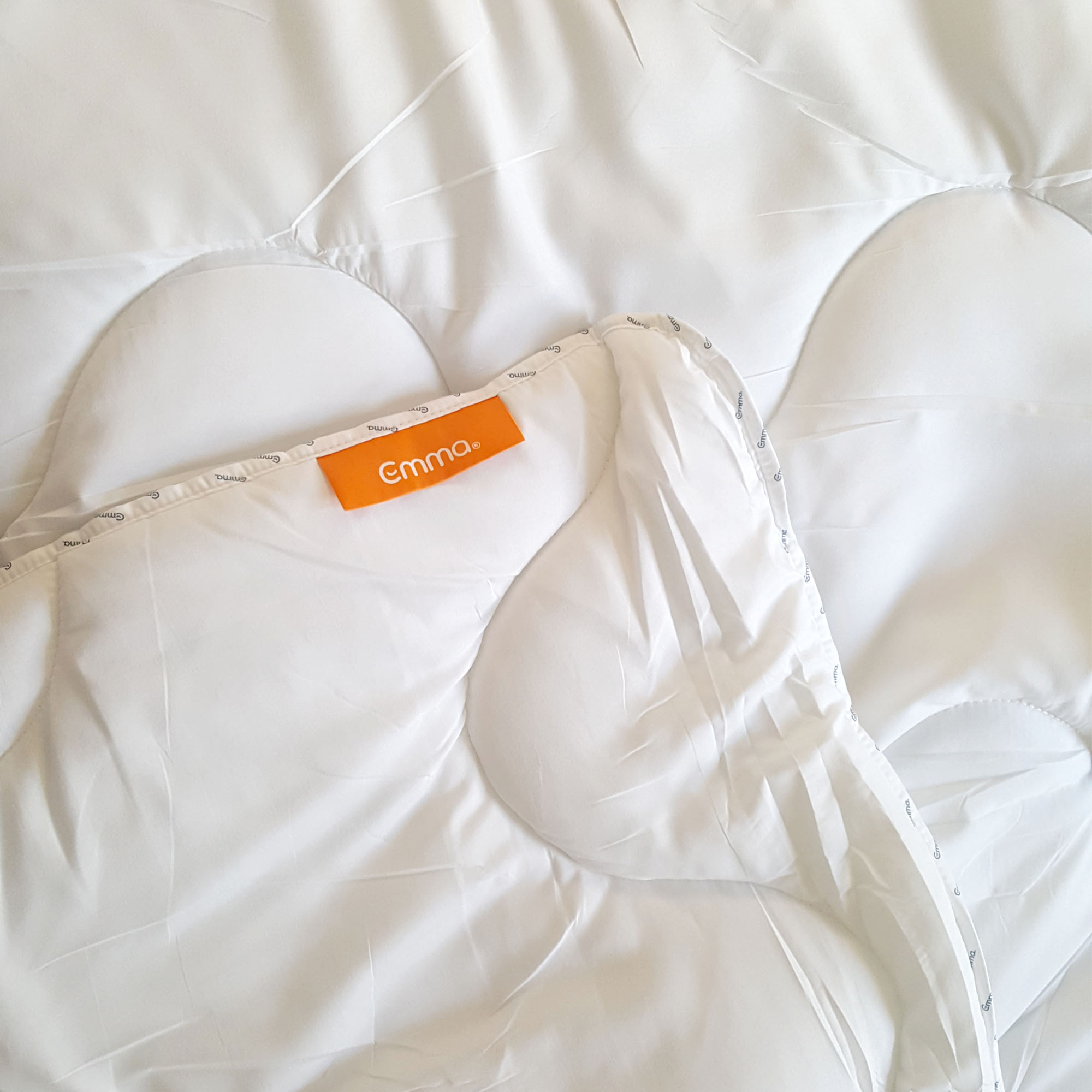
Verdict
Overall, I thought the Emma Cloud Duvet was OK.
After getting over my initial disappointment over how the duvet was packaged and my shock at its thinness, I liked how light it felt over my body, the fact it didn't make any noise when I tucked it around me, and how warm it kept me on cold nights.
The fact it can (presumably) be washed at either 40°C or 60°C is another bonus.
However, I didn't feel the duvet felt particularly premium or luxurious and although it kept me toasty, I found it a slightly clammy sort of warmth that I knew would quickly turn into overheating should the ambient temperature of my bedroom rise. I prefer a duvet where I don't have to constantly stick one leg out of bed to cool down.
I also think the Cloud Duvet is expensive for what it is. As mentioned, there are far more affordable polyester microfibre duvets on the market, and the M&S and John Lewis options mentioned above both use more responsibly-sourced recycled polyester fibres which the Emma Cloud Duvet does not. Both of these brands also clearly state what tog rating their respective duvets are, whereas it would seem the Emma Cloud Duvet is a bit of a potluck situation.
All in all, if you get this duvet included with an Emma deal when you buy a new mattress, it's well worth a try to see how it suits you. It does the job.
Would I purchase it at full price though? Probably not. If I wanted a synthetic duvet I'd opt for the M&S Supremely Washable Duvet or the John Lewis Synthetic Soft Touch Washable Duvet, instead.
How I tested
I tested the Emma Cloud Duvet at home on my own bed, sleeping underneath it for a week to see how it performed.
Whilst testing I assessed the duvet's feel – this includes how malleable and squashy it feels to scrunch up in my hand, how well it tucked in around my body at night, if it made any noise when doing so, and how well it drapes on the bed.
I also assessed the duvet's temperature regulation and breathability. In doing so I made sure to keep my bedroom between 16°c and 18°c. I also made sure to use the same breathable cotton duvet cover I use to test every duvet we put through Ideal Home's duvet testing process.

As a hot sleeper who is prone to overheating, I then set to snoozing to see if I slept comfortably throughout the night, or whether I woke up hot and sticky under the covers and had to fling a leg out of bed or throw the covers off myself to cool down. And, alternatively, if I woke up too cold.
I also assessed the duvet's ease of care, and where possible made sure to wash the duvet according to its care instructions to see if it came out of the washing machine looking and feeling as good as when it went in.
Lastly, I considered the duvet's price point and value for money, as well as researching any third-party reviews to see what a wider selection of owners think of the product, before giving the duvet a score out of five.

I'm Amy, and as Ideal Home's Sleep Editor I've spent the last four years testing sleep products by night and sharing my findings with our readers by day. That includes sleeping under more than twenty different duvets on my own bed to find the best-in-class. All in all, that's over 10,000 hours of at-home duvet testing under my belt.

Amy is Ideal Home’s Sleep Editor and the Ideal Home Certified Expert on Sleep. She's spent the last four years researching and writing about what makes for the best night’s sleep during the day and testing out sleep products to find the best-in-class by night. So far she’s clocked up over 10,000 hours of pillow, duvet, and mattress testing experience.
Our go-to for all things sleep-related, she’s slept on and under bestselling products from Simba, Emma, Hypnos, Tempur, Silentnight, Panda, and many many more.
As a hot sleeper, Amy is always on the lookout for the most breathable bedding, but she also leads a wider team of testers to ensure our product testing encompasses both hot sleepers, cold sleepers, front sleepers, back sleepers, side sleepers, and everything in-between.